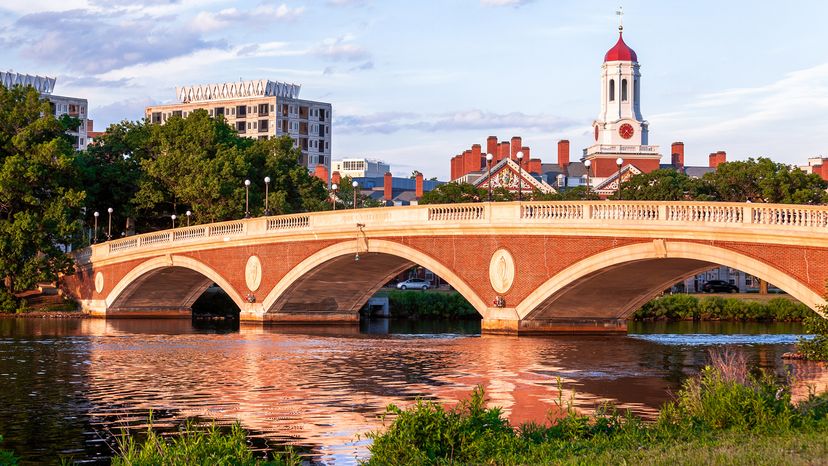Educational attainment is the highest level of education that a person has completed. WalletHub evaluated this, along with the quality of education, across 20 different metrics. Each metric was scored on a scale from 0 to 100, with 100 being the "most educated."
These metrics included:
- the determined quality of the public school system
- public high school graduation rate
- college graduation rates,
- the highest level of education completed by all adults in the population
The states were ranked according to the weighted average of the scores across these metrics to determine the most educated states.
1. Massachusetts
Massachusetts ranks as the most educated state in the nation (following closely behind the District of Columbia, which doesn't count as a state).
Home to several of the top universities — including Harvard and MIT — 43.7 percent of the state's population have earned a bachelor's degree. Massachusetts is the top-rated state for educational attainment and also has the highest university quality.
The state has the fourth-highest median household income at $86,725, while the median household income in its city of Dover is $250,000. However, despite high education and wealth, the state has consistently had relatively high poverty and unemployment rates (5.4 percent long-term average).
2. Maryland
Maryland is the second-most educated state in the country. Maryland ranks first for quality of education, so children in the state get a head start with their elementary education in the public school system.
As for educational attainment, 91.1 percent of residents have completed at least high school, and 40.2 percent of the population holds bachelor's degrees.
With high rankings for quality of education and educational attainment, the state sees a correlation in median household income: At $94,384, Maryland has the highest median household income in the country.
3. Connecticut
Connecticut is the third-most educated state, ranking fourth for educational attainment and fifth for quality of education. Connecticut also has the third-highest percentage of graduate degree holders (17 percent).
4. Colorado
Colorado ranked second overall in educational attainment. The state has the highest percentage of residents with an associate's degree (30.2 percent) and the second-highest percentage of residents with a bachelor's degree (39.4 percent).
Interestingly, the state ranks the third-lowest in average university quality.
5. Vermont
As the fifth-most educated state, Vermont ranks fifth for educational attainment and ninth for quality of education. 93 percent of the population have graduated high school, and 38 percent hold bachelor's degrees.
6. New Jersey
New Jersey is the sixth-most educated state, ranking fourth in quality of education and tenth for educational attainment. 43.1 percent of the population holds a bachelor's degree or higher. The state has the fifth-highest median household income at $85,239.
7. Virginia
Virginia is a strong seventh for the most educated state, placing seventh for educational attainment and seventh for quality of education.
8. New Hampshire
New Hampshire is the eighth-most educated state and has the second-highest percentage of high school graduates (94.1 percent).
New Hampshire has had a consistently low rate of unemployment, hovering around 2.3 percent, and has the lowest poverty rate in the nation at 5.3 percent. Additionally, the state's median household income is $88,235, the third-highest among U.S. states.
9. Minnesota
Minnesota is the ninth-most educated state, with 93.61 percent of the population having earned their high school diploma, ranking eighth in educational attainment. Minnesota is also the home base for many Fortune 500 companies which provide many job opportunities within the state.
10. Washington
Washington state is the tenth-most educated state in the country. It ranks ninth for educational attainment and third for associate's degree holders.
